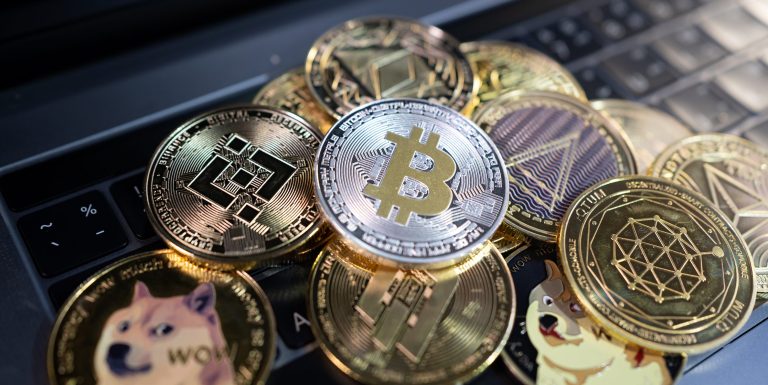As the percentage of Americans who own or have owned cryptocurrency in the past year closes in on the 25% mark, it’s becoming clear that the digital assets industry has reached solidly into the mainstream.
The number of U.S. crypto owners and investors reached 23%, or 59.6 million, in 2021. That’s up from 16%, or 41.5 million Americans, in 2020. And nearly one-third of those people have used crypto to make a payment, either online or in a store.
Those figures, drawn from PYMNTS’ survey, “The U.S. Crypto Consumer: Cryptocurrency Use in Online and in-Store Purchases,” reflect crypto’s move into the payments mainstream as well. The data is based on a survey of 2,334 U.S. consumers, which was conducted in the last week of February and the first two days of March.
Read more: Cryptocurrency Use in Online and in-Store Purchases
That growth tracks with a finding in the previous PYMNTS crypto report, covering 2020, which predicted that 31% of Americans would have owned crypto at some point by the end of the second quarter this year.
The current growth in crypto ownership showcases an increasing number of ways to make payments that don’t require any real knowledge of the ins and outs of cryptocurrencies.
Advertisement: Scroll to Continue
More Payments Channels
While crypto-specific debit cards linked to top exchanges like Coinbase and FTX target at somewhat more knowledgeable crypto investors, there are a growing number of other channels — most notably Block’s Cash App and PayPal via its 32 million-strong merchant network — that let customers spend crypto without having to apply for a new card.
See more: As Crypto’s Popularity Grows, Gateway Providers Help Merchants Accept It
Card processing giants Visa and Mastercard have increased support for crypto dramatically in 2021, with both announcing the addition of capabilities that let users settle payments in crypto. Other services provided include compliance and fiat off-ramping support.
Read more: Visa Network Will Settle Transactions in Crypto, First Use Case USD Stablecoin
Raj Dhamodharan, executive vice president of digital asset and blockchain products and partnerships at Mastercard, told PYMNTS’ Karen Webster in August that the company is expanding its Crypto Card program across its network and will eventually make it available on all transactions, including retail, commercial and P2P.
See more: Mastercard Moves to Eliminate ‘Fiat Burden’ And Compliance Worries From Crypto Cards
“We need to be deliberate and thoughtful about it because with any payment system, integrity is the No. 1 thing,” Dhamodharan told Webster. “Without trust, there is nothing.”
PayPal in February created a crypto advisory panel, describing what it called its “bold ambitions for shaping how blockchain, crypto and digital currencies will provide increased access to financial services in the near term.”
Read more: PayPal Creates Advisory Panel for Crypto
Then there are crypto payments processors like BitPay (co-sponsor of PYMNTS’ U.S. Crypto Consumer report), Coinbase Commerce and bitcoin-specific Strike, which earlier this month announced deals that will allow NCR’s point-of-sale (POS) terminals to accept bitcoin payments. It did the same with Shopify and prepaid payments processor Blackhawk.
See more: Bringing Bitcoin Firmly into Payments, Strike Partners With NCR, Shopify, Blackhawk
That was based on Strike’s use of bitcoin’s Lightning Network, a Layer2 solution that makes bitcoin transactions far faster and cheaper.
Cash App added lightning integration in January, and in April, Ark Invest’s Cathie Wood announced that she’d put her firm’s entire crypto payments focus on Block’s payments app
Read more: Ark Invest’s Cathie Wood Bets Cash App Will Win Bitcoin Payments
BitPay CEO Stephen Pair told Webster in January that his firm saw a big crypto payments boom coming in 2022, saying “many more people — that next wave of people — [are] getting interested in crypto both from an investment perspective and a ‘let’s try it for a payment’ [perspective],” adding that “there could be an inflection point in 2022 where it becomes more ubiquitous.”
Pair said BitPay crypto payments were growing past just bitcoin, with Ether and stablecoins accounting for 28% of payments processed by BitPay (15% and 13%, respectively) , with another 3% from smaller altcoins like Litecoin and Dogecoin. That up from 8% a year earlier.
“There’s going to be many more places with that service — that you’ll be able to spend crypto and do it in an in-person setting, which may make people more comfortable trying it out than perhaps if it’s on a website where they’re not sure if they’re doing it right or wrong,” he said.




